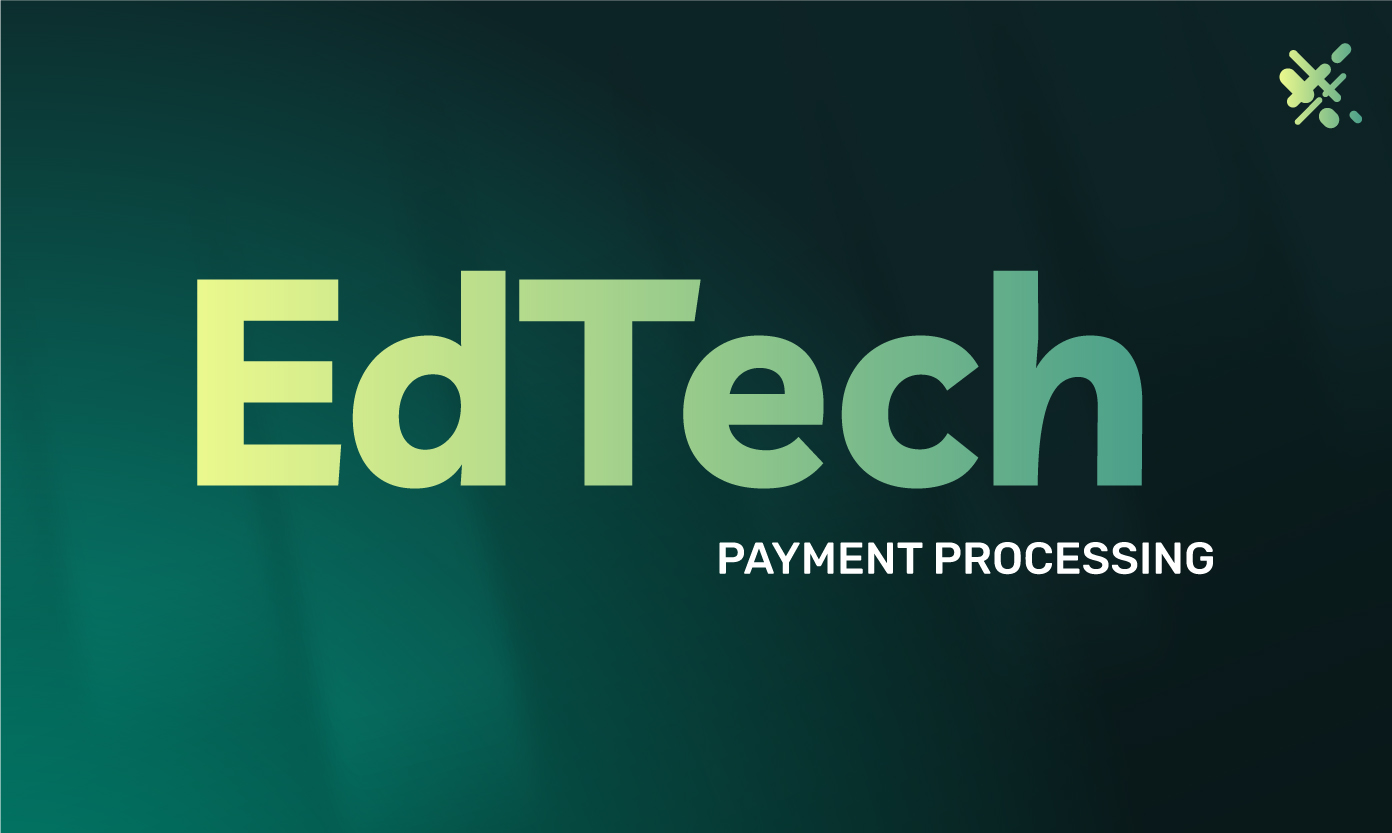EdTech, or educational technology, is the fusion of technology with education. Mainly, it refers to hardware and software to facilitate learning, including tablets, interactive whiteboards, online courses, and classroom management software, all examples of EdTech.
Creating, servicing, and selling EdTech is not free. Like any business, there are overhead costs. EdTech companies need software developers, IT departments, salespeople, and customer support teams. Edtech companies, this article will review how to overcome certain industry risks and enhance accessibility to your product.
Growth in The Edtech Market
Profits from customers cover all of these costs. But how exactly can EdTech companies seamlessly integrate and efficiently manage edTech payments?
The global edtech market had an estimated value of $115 billion in 2022, and experts expect it to grow at a CAGR of 18.3% until it surpasses $433 billion in 2030. Technology implementation in school settings has increased nearly 100%. And nearly 90% of K-12 teachers are using some form of educational technology in the classroom. Some of the most common edtech tools are Google products like Docs, Slides, Sheets, Forms, and YouTube.
Despite rapid growth in K-12 settings, the largest market sector remains university education. Online university education had a market volume of nearly $104 billion in 2023. And over 70% of colleges and universities have launched or plan to launch at least one online undergraduate program within the next three years.
Corporate EdTech
EdTech is also making serious inroads into the corporate world. Did you know that the average employee forgets 65% of the material they’ve learned after just 7 days? After 6 months, they may forget up to 90% of the material they learned in corporate training. EdTech can easily fill this learning and retention gap.
Employers can integrate online modules for continuing education and upskilling into employee schedules. These online, cloud-based modules may bring down the average $1,300 corporations spend annually on training just one employee. Maybe that’s why corporate EdTech is already a $27.5 billion industry.
Gamification, Learning, and Mental Health
Gamification involves turning tasks into video games, including classroom tasks in math, science, and language arts. It can also include turning routine life tasks into video games. Overseers can incentivize specific tasks, unlocking higher levels–like an actual video game.
You might wonder if turning school into a video game produces results. Indeed, it does. The International Journal of Human-Computer Studies found that challenge-based gamification can boost student outcomes by 35%. And other studies have shown that when a game has added social elements, it can increase retention by 50%.
Gamification can also help to treat mental health conditions like anxiety, depression, and ADHD. For example, individuals with ADHD may struggle with finding intrinsic motivation. Video games’ immediate rewards and instant gratification can motivate initiating and completing activities like cleaning a room, writing an essay, or taking out the trash.
Experts value gamification as an industry at close to $12 billion in 2021. Its estimated CAGR of 27.9% actually surpasses EdTech as a whole and will land on a valuation of $117 billion by 2032. The fact that gamification alone will take up 25% of the EdTech market share (at least according to this estimate) shows you the importance that gamification will play.
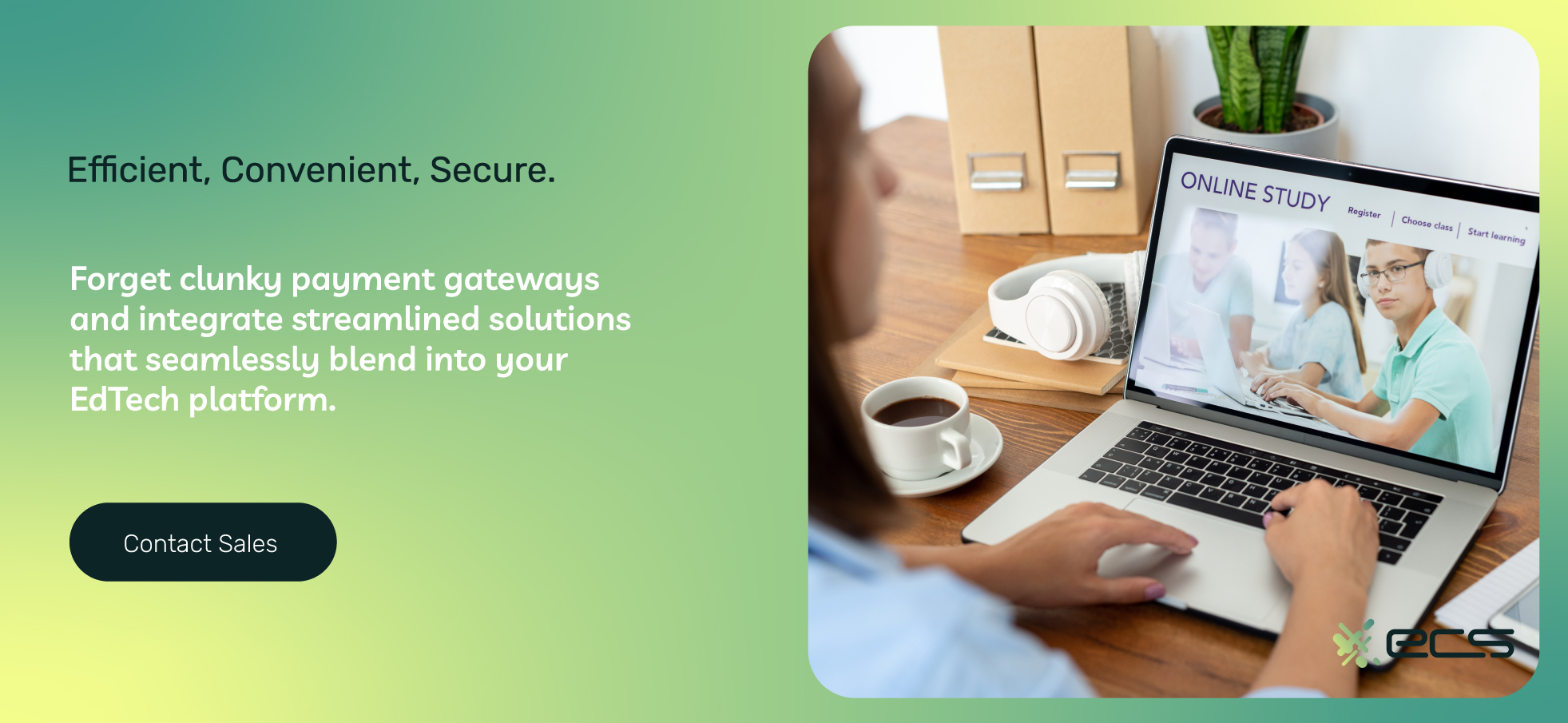
Differential Machine Learning
One of the most challenging parts of teaching multiple students simultaneously is teaching everyone in the best way that suits their learning style. Students have different degrees of intelligence, abilities, disabilities, and learning styles. What is effective for one type of student may not be effective for another.
Machine learning can remove this headache by facilitating differential learning. The EdTech platform uses AI (artificial intelligence) to assess student answers and create unique material moving forward.
The language learning app Duolingo is one example. Duolingo tailors its content based on user performance and behavior. For example, if a student particularly has trouble with grammar but less with vocabulary, instructional material will focus mainly on grammar.
The power of AI to provide differential learning experiences is one of the greatest strengths of EdTech. And it’s one of the reasons that teachers are increasingly adopting EdTech in the classroom space. EdTech is making it easier for teachers and educators to communicate concepts effectively, improving learning and retention.
Online Courses and MOOCs
MOOC stands for Massive Open Online Course. You may or may not have taken one of these before, but you’ve probably seen ads for them everywhere. That’s because this particular facet of EdTech has revolutionized informal education. Anyone who feels they know something about anything can create an online course and sell it to an unlimited number of students all around the world.
Platforms like BrainCert and Udemy have allowed course creators to teach everything from computer coding to how to have a better marriage. These platforms enable creators to make a course with video and text instructions. Students can purchase the course and learn the material from home, while they commute, or while avoiding Green Eggs and Ham (e.g., on a boat, on a goat, on a plane, on a train).
Experts value the MOOC industry at nearly $12 billion, and growing at a CAGR of 18% until surpassing $39 billion in 2030. The explosion of these online courses has saturated the online marketplace with self-proclaimed gurus. That said, it will be interesting to see how the MOOC industry stabilizes from a regulatory and quality standpoint.
AR, VR, and Other Types of Hardware
Most people can look back fondly to an elementary school field trip to Independence Hall, The Alamo, Sutter’s Mill, or some other local landmark of historical interest. These field trips help bring the educational classroom component to life. Plus, some interesting things probably happened on the bus ride.
Incorporating the tangible experience of visiting a place becomes more complicated when teaching, say, history. Still, what if students could immerse themselves in ancient Rome or walk through a medieval castle? This is something that VR headsets can facilitate.
Companies like Meta (the company that takes pictures of your food that you posted and then sells them to Russia for unknown reasons) are now making VR headsets. Google and dozens of other tech startups are following suit. These headsets can improve learning and retention by engaging students in the material.
AR headsets are a similar set of hardware. Augmented Reality involves putting virtual images into the backdrop of a person’s actual field of vision. AR headsets are particularly helpful in the areas of math or science. They can help students conceptualize concepts by giving them nearly tangible 3D examples right in front of them.
Are There Any Downsides to EdTEch?
Like anything else, there are downsides to EdTech. Let’s start with the exploding world of MOOCs. There is little to no regulatory oversight in terms of online course content. Platforms like Udemy will indeed review submitted courses for quality control. However, they do not have parameters in place about credentialing and certification. The result is that (as mentioned) anyone can create a course about anything. Some courses may result in ethical transgressions if an instructor gives bad advice on a topic.
One area where this is readily apparent is the number of online courses claiming to provide life advice. However, it may impact more tangible venues, such as professional skill sets. Universities are not immune to this challenge, for instance.
Some online programs offer mediocre content while saddling students with the same debt they’d otherwise pay for in-person instruction. Some students have emerged from these programs and have received the devastating news that they are unhirable due to subpar skill sets, resulting in actual lawsuits against the institutions.
Edtech may eliminate a particular portion of interpersonal interaction formerly inherent in education. For example, A school district in Texas is experimenting with using robots to combat a shortage of teachers. To clarify, the robots are not teaching students. Instead, they facilitate Zoom instruction from a small set of teachers to a larger student body than they could otherwise reach.
What are the long-term implications of such educational modalities on the societal and individual levels? We really have no idea. For the time being, such technologies may facilitate more distraction, more cheating, and diminished development of emotional intelligence.
However, we are not here to delve into the pros and cons of EdTech. Rather, we are providing an intro to discussing payment processing for education.
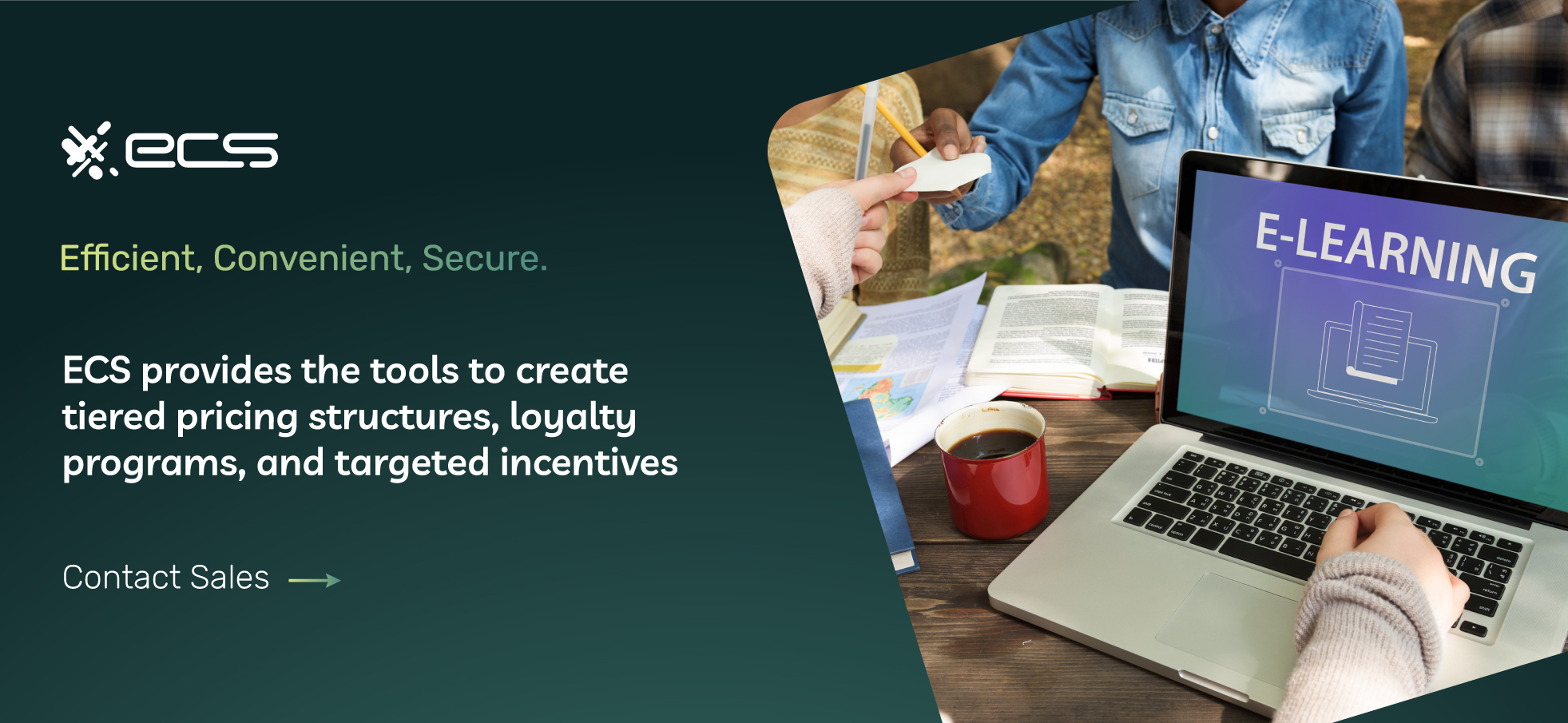
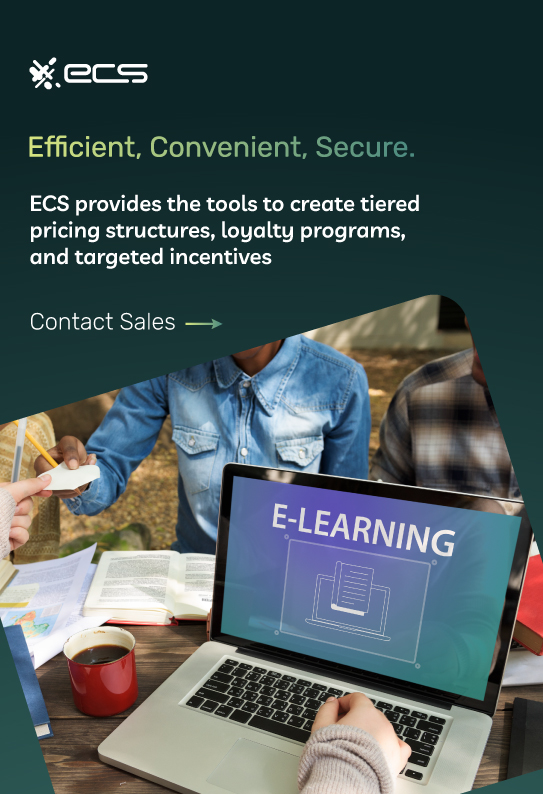
Why You Should Not Use an EdTech Platform
Let’s first address the content creators of online courses. If you have created an EdTech solution like an online course, putting that course on a platform like Udemy, Coursera, or BrainCert makes sense. They provide the platform for your course content, a dashboard for managing the content, and the means for accepting payments.
The downside to these platforms is that they take huge fees. For example, Udemy will take 50% if a student finds your course through the website. They will also frequently discount your course to promote purchasing, which means you make even less money. Thinking of your course as a product (and not a service), can you think of any other retailing scenario where a buyer takes 50% of the profit?
Of course, platforms like Udemy are providing everything to get you going, including payment gateways. However, once you figure out how to market a course on your own, you will save a lot of money by building your own website and working with your own payment processor.
A company that helps you accept payments online will probably charge no more than 3% to process payments. This cost is far better than shelling out 50% of every sale…and at prices that the platform sets.
Recurring EdTech Payments
Many EdTech products will rely on a subscription model. EdTech customers such as K-12 schools, businesses, and higher educational institutes may pay to subscribe to a classroom management software or to rent AR headsets. Whatever the case, you need a solution for automatically managing recurring payments.
A payment processor can help you accept credit and debit card payments and securely store the payment information to process recurring charges. In fact, if you are running card payments, it is required to be in PCI compliance.
PCI DSS, or Payment Card Industry Data Security Standards, are principles from the card networks. Aspects of PCI DSS include secure storage with encryption and tokenization and using a secure Wi-Fi networks to process transactions.
Cloud-Based EdTech
Many EdTech products are cloud-based software systems that customers can access remotely from any device. Customers pay a monthly fee to gain access to your platform remotely and their data is stored in remote servers (aka the data “cloud”).
The cloud-based, subscription service business model is now the norm in software, not just in EdTech but in almost every industry. For example, Salesforce and Oracle are prominent purveyors of CRM (customer relationship management software) that organizations use to manage their interactions with their customer base.
Ideally, the subscription with a customer will last into perpetuity. However, this means an EdTech company will need a way to automate recurring payments. And if they have millions or thousands or hundreds or even dozens of customers, the only way to do this effectively is with a payment processor.
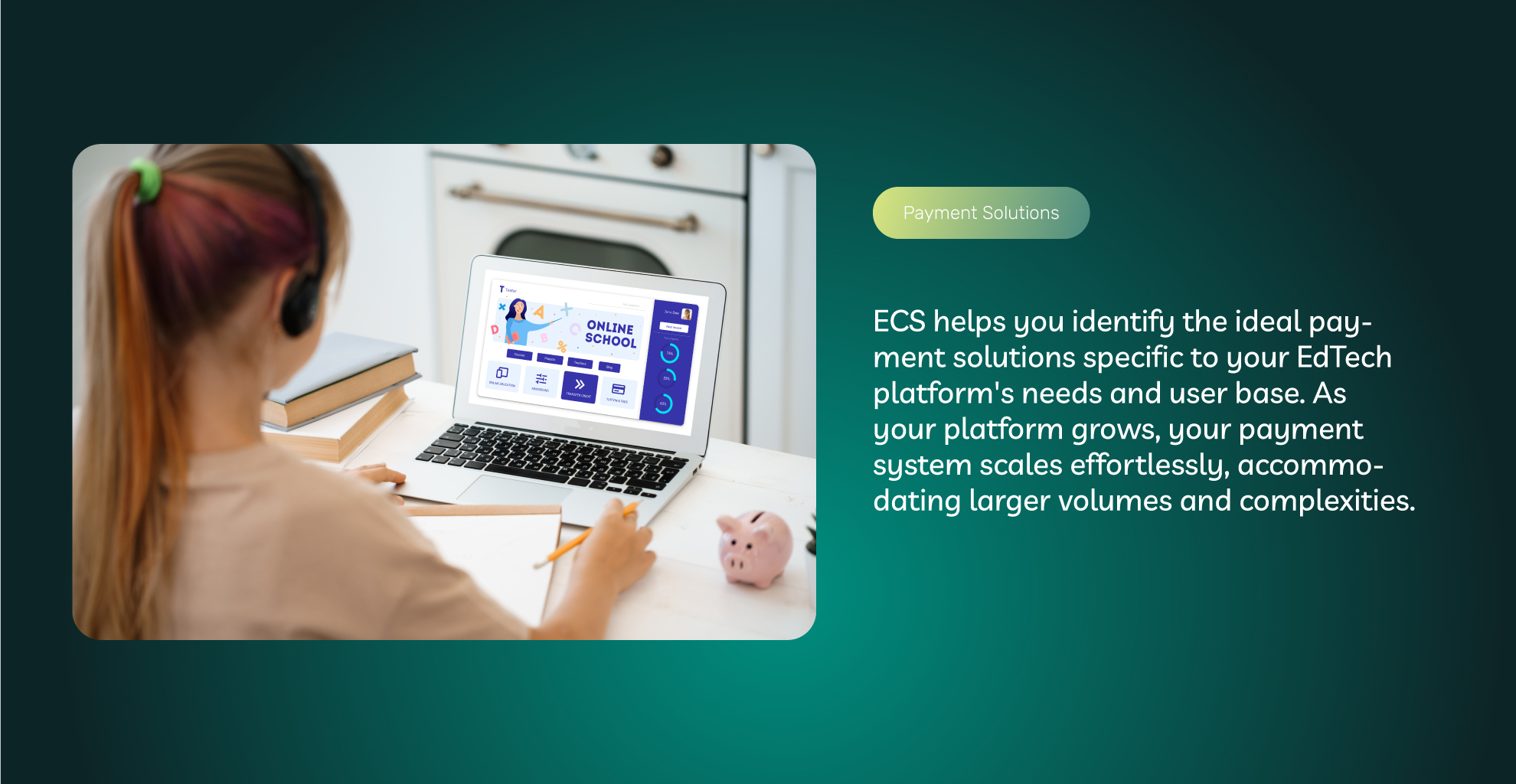
EdTech Payment Plans and Point of Sale Financing
Some EdTech products are more expensive than others. Let’s look at a student-facing example first with MOOCs. Most creator-generated online courses retail for no more than a few hundred dollars, if that. However, some coaching programs can cost thousands of dollars.
Most students cannot settle a financial obligation like that in full, upfront. They will need some sort of automated payment plan. These automated payments will need to securely store payment information. At ECS we even offer point-of-sale financing. With POS financing, the student essentially obtains a “loan” at the point of sale. The merchant (the educator or EdTech company) receives payment in full, usually within 48-72 hours. Then the student is then responsible for monthly payments to the lender.
EdTech Card Payments Versus ACH Payments
Card networks (Visa, Mastercard, Amex, and Discover) typically charge 2% to 3% for every transaction. For small purchases, this is not such a big deal. However, higher education payment processing and even K-12 private school payments have large sums. 2% of $14,000 is nearly $300. When multiplied by 500 students, that’s a cool $150,000.
Can you imagine what your educational institution could do with an additional $150,000 every year? That would pay for a new science wing or state-of-the-art gym.
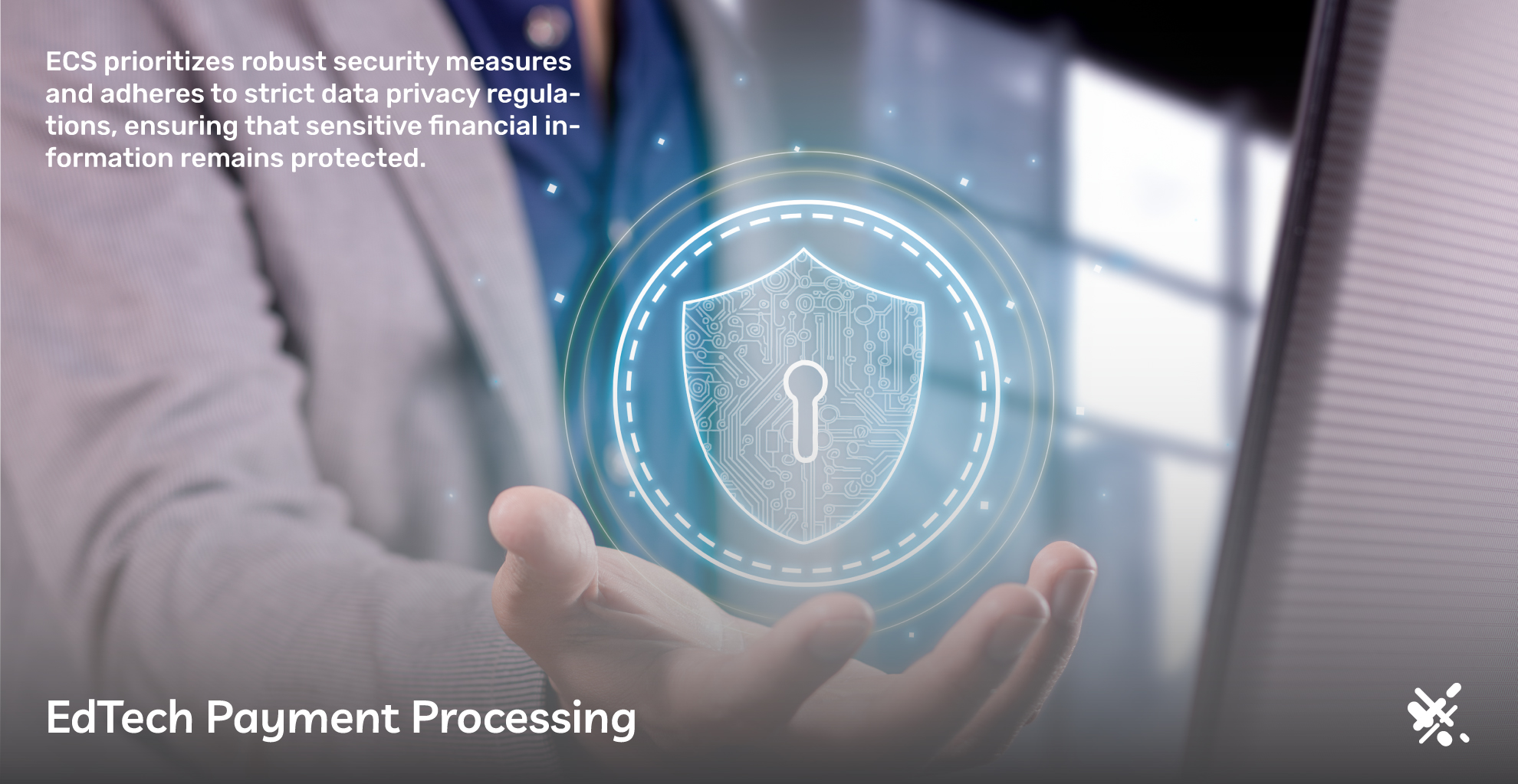
ACH Payment Benefits
Schools could, however, encourage ACH payments With a notification to parents that credit and debit cards are subject to a processing fee that covers the cost of accepting card payments. As long as they state this upfront, it is a legal means of defraying payment processing costs.
However, taking ACH payments eliminates the card network charges entirely. ACH payments generally cost $0.30 or less per payment, which is phenomenally less than card network surcharges.
Moreover, setting up recurring payments is very easy. Simply input account and routing numbers into the payment system online and every month, the ACH network transfers the tuition payment right from the bank account to the school’s business account. Using ACH processing is a win-win for schools and parents– avoiding an extra 2-3% processing fee.
How Do You Draw Students To Your EdTech Offerings
Now that we’ve touched on edtech payments and higher education payment gateway solutions let’s talk about how to get students to take out those credit cards. Of course, for private schools and/or colleges collecting tuition, you won’t need to worry about that here. Or do you?
Colleges and universities need to do marketing, especially because there is so much competition. This is why many educational institutions send representatives to fairs and to meet with students at high schools.
Marketing online courses becomes a bit of a different ball game. Many universities will rely on more “traditional” online advertising like paid ads. We won’t say much about this since these institutions have adept marketing teams familiar with best practices.
What we would like to touch on is marketing your edtech for smaller businesses and course creators. Many times, your best tool will be social media. Venues like Facebook, Instagram, and TikTok are excellent for offering free content to engage potential students.
Doing a Q&A session about a topic in your wheelhouse is free and easy. At the end of those 30 minutes or an hour, you can call attention to your online course or edtech product. This strategy also applies to small startups peddling edtech SaaS, as the teacher space on social media accounts is very active (search hashtags like #teachers #teachersofinstagram and find out). Social media posts are essentially your demo.
Once the demo is over, it’s time to direct students to the payment page. This is (once again) where you need a relationship with a payment processor. Integrated payment portals fitting seamlessly into your website will allow students to pay online.
Contact us to learn more about how a payment processor can help you get paying students seamlessly enrolled, or fill out the form below.
Frequently Asked Questions About EdTech Payments
EdTech companies can streamline online payment collection by integrating a payment gateway with (ECS) payments. ECS payments can help you automate transactions and facilitate secure recurring subscription services.
Recurring payments ensure regular income and simplifies transactions for businesses and clients, avoiding manual payment processing and maintaining secure data storage that complies with PCI DSS standards. To learn how to implement recurring payments into your business, contact ECS Payments today to get started.
Using ACH (Automated Clearing House) payments eliminates pricey card processing fees, making it a cost-effective solution that can benefit both the educational institution and its students with less fees and more budget to use in more impactful ways. To get started with ACH processing, contact ECS Payments today.
Any transaction facilitated by the credit card networks must adhere to PCI DSS guidelines to protect cardholder information. The same regulations do not apply to ACH transactions. ECS Payments makes it simple to become PCI compliant.
